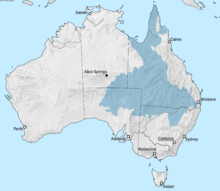The Thermomicrobia is a group of thermophilic green non-sulfur bacteria. Based on species Thermomicrobium roseum and Sphaerobacter thermophilus, this bacteria class has the following description:

Thermus is a genus of thermophilic bacteria. It is one of several bacteria belonging to the Deinococcota phylum. Thermus species can be distinguished from other genera in the family Thermaceae as well as all other bacteria by the presence of eight conserved signature indels (CSIs) found in proteins such as adenylate kinase and replicative DNA helicase as well as 14 conserved signature proteins (CSPs) that are exclusively shared by members of this genus.
Sulfur-reducing bacteria are microorganisms able to reduce elemental sulfur (S0) to hydrogen sulfide (H2S). These microbes use inorganic sulfur compounds as electron acceptors to sustain several activities such as respiration, conserving energy and growth, in absence of oxygen. The final product of these processes, sulfide, has a considerable influence on the chemistry of the environment and, in addition, is used as electron donor for a large variety of microbial metabolisms. Several types of bacteria and many non-methanogenic archaea can reduce sulfur. Microbial sulfur reduction was already shown in early studies, which highlighted the first proof of S0 reduction in a vibrioid bacterium from mud, with sulfur as electron acceptor and H
2 as electron donor. The first pure cultured species of sulfur-reducing bacteria, Desulfuromonas acetoxidans, was discovered in 1976 and described by Pfennig Norbert and Biebel Hanno as an anaerobic sulfur-reducing and acetate-oxidizing bacterium, not able to reduce sulfate. Only few taxa are true sulfur-reducing bacteria, using sulfur reduction as the only or main catabolic reaction. Normally, they couple this reaction with the oxidation of acetate, succinate or other organic compounds. In general, sulfate-reducing bacteria are able to use both sulfate and elemental sulfur as electron acceptors. Thanks to its abundancy and thermodynamic stability, sulfate is the most studied electron acceptor for anaerobic respiration that involves sulfur compounds. Elemental sulfur, however, is very abundant and important, especially in deep-sea hydrothermal vents, hot springs and other extreme environments, making its isolation more difficult. Some bacteria – such as Proteus, Campylobacter, Pseudomonas and Salmonella – have the ability to reduce sulfur, but can also use oxygen and other terminal electron acceptors.
Thermoanaerobacter is a genus in the phylum Bacillota (Bacteria). Members of this genus are thermophilic and anaerobic, several of them were previously described as Clostridium species and members of the now obsolete genera Acetogenium and Thermobacteroides
Thermoanaerobacter brockii, formerly Thermoanaerobium brockii, is a thermophilic, anaerobic, spore-forming bacterium.
Thermotoga hypogea is a hyperthermophilic organism that is a member of the order Thermotogales. It is thermophilic, xylanolytic, glucose-fermenting, strictly anaerobic and rod-shaped. The type strain of T. hypogea is SEBR 7054.
Fervidobacterium changbaicum is a species of thermophilic anaerobic bacteria. It is non-sporulating, motile, gram-negative, and rod-shaped. The type strain is CBS-1(T). Fervidobacterium changbaicum was isolated from a hot spring mix of mud and water in the changbai mountions, China
Thermosyntropha lipolytica is a lipolytic, anaerobic, alkalitolerant, thermophilic bacteria. It lives in syntrophic coculture with a methanogen. Its cells are non-motile, non-spore forming, straight or slightly curved rods. Its type strain is JW/VS-265T.
Desulfacinum hydrothermale is a thermophilic sulfate-reducing bacterium. Its cells are oval-shaped, 0.8–1 μm in width and 1.5–2.5 μm in length, motile and Gram-negative. The type strain is MT-96T.
Caldanaerobius zeae is a Gram-positive thermophilic, anaerobic, non-spore-forming bacterium from the genus of Caldanaerobius which has been isolated from organic waste leachate in Hoopeston in the United States.
Caloranaerobacter is a Gram-negative, thermophilic, anaerobic and chemoorganotrophic bacterial genus from the family of Clostridiaceae.
Mahella is a genus in the phylum Bacillota (Bacteria). The name Mahella derives from: Neo-Latin feminine gender dim. noun Mahella, named in honour of the American microbiologist Professor R.A. Mah, for his important contribution to the taxonomy of anaerobes.
Alicyclobacillus acidocaldarius is a species of Gram positive, strictly aerobic, bacterium. The bacteria are acidophilic, thermophilic, and produce endospores. The first identified strains of A. acidocaldarius were from geysers in Yellowstone National Park and fumerole soil in Hawaii Volcano National Park. The species was originally classified as Bacillus acidocaldarius in 1971, but further 16S rRNA studies found that the species belonged in the newly created genus Alicyclobacillus. The species name is derived from the Latin acidum (acid) and caldarius, referring to the acidic and high temperature environments from which it was first isolated. Thomas D. Brock was one of the researchers who first categorized the species; his discovery of Thermus aquaticus allowed for other researchers to discover Taq polymerase and polyermase chain reaction (PCR).
Kyrpidia is a genus of Gram-positive, rod-shaped, thermophilic, spore-forming bacteria.
Effusibacillus pohliae is a species of Gram positive, aerobic, thermophilic bacterium. The cells are rod-shaped and form spores. It was first isolated from Mount Melbourne, Antarctica. The species is named after the genus of Pohlia nutans, a species of moss that was colonizing the area where the type strain was isolated. E. pohliae has also been isolated from a geothermal heat pump in South Korea.
Fervidicella is a Gram-negative, thermophilic and strictly anaerobic bacterial genus from the family of Clostridiaceae with one known species. Fervidicella metallireducens has been isolated from microbial mats from the Great Artesian Basin.
Thermohalobacter is a Gram-negative, thermophilic, strictly halophilic, non-spore-forming anaerobic, rod-shaped and motile genus of bacteria from the family of Clostridiaceae with one known species. Thermohalobacter berrensis has been isolated from a solar saltern.
Thermotalea is a strictly anaerobic and thermophilic genus of bacteria from the family of Clostridiaceae with one known species. Thermotalea metallivorans has been isolated from microbial mats from the Great Artesian Basin.
Rhodothermus is a genus of bacteria.

